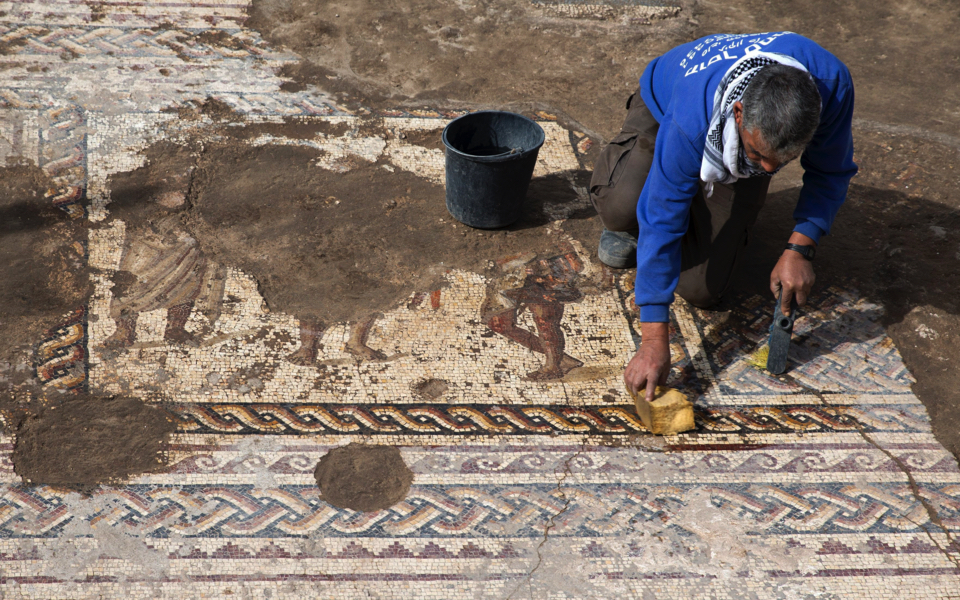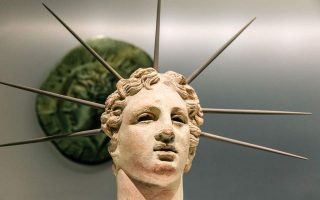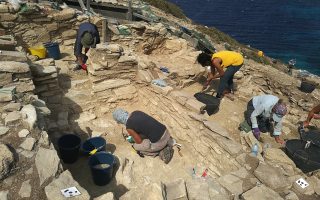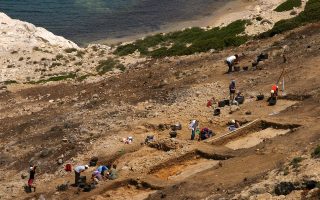Israeli archaeologists unearth 1,800-year-old mosaic, also featuring Greek inscription

A 1,800-year-old mosaic of toga-clad men dating back to the Roman era has been unearthed in Israel, archaeologists said on Thursday.
The mosaic was discovered during the excavation of a building from the Byzantine period – some 300 years younger than the mosaic it was on top of – in the coastal city of Caesarea.
"The surprise was actually that we found two beautiful monuments from the glorious days of Caesarea," Peter Gendelman, co-director of excavation for the Israel Antiquities Authority, told Reuters of the building and mosaic.
Caesarea was a vibrant Roman metropolis built in honour of Emperor Augustus Caesar by King Herod, who ruled Judea from 37 BC until his death in 4 BC.
The excavated portion of the mosaic, which the antiquities authority said was 3.5 metres by 8 metres in size, depicts three toga-clad men, as well as geometric patterns and an inscription in Greek, which is damaged.
If the mosaic came from a mansion, the figures could have been the owners, or if it was a public building, they may have been the mosaic’s donors or members of the city council, Gendelman said.
The mosaic was of a high artistic standard, with about 12,000 stones per square metre, the antiquities authority said.
Israel is undertaking the largest conservation and reconstruction project in the country in the Caesarea National Park, the antiquities team said. The project aims to reconstruct a Crusaders-era bridge.
[Reuters]





